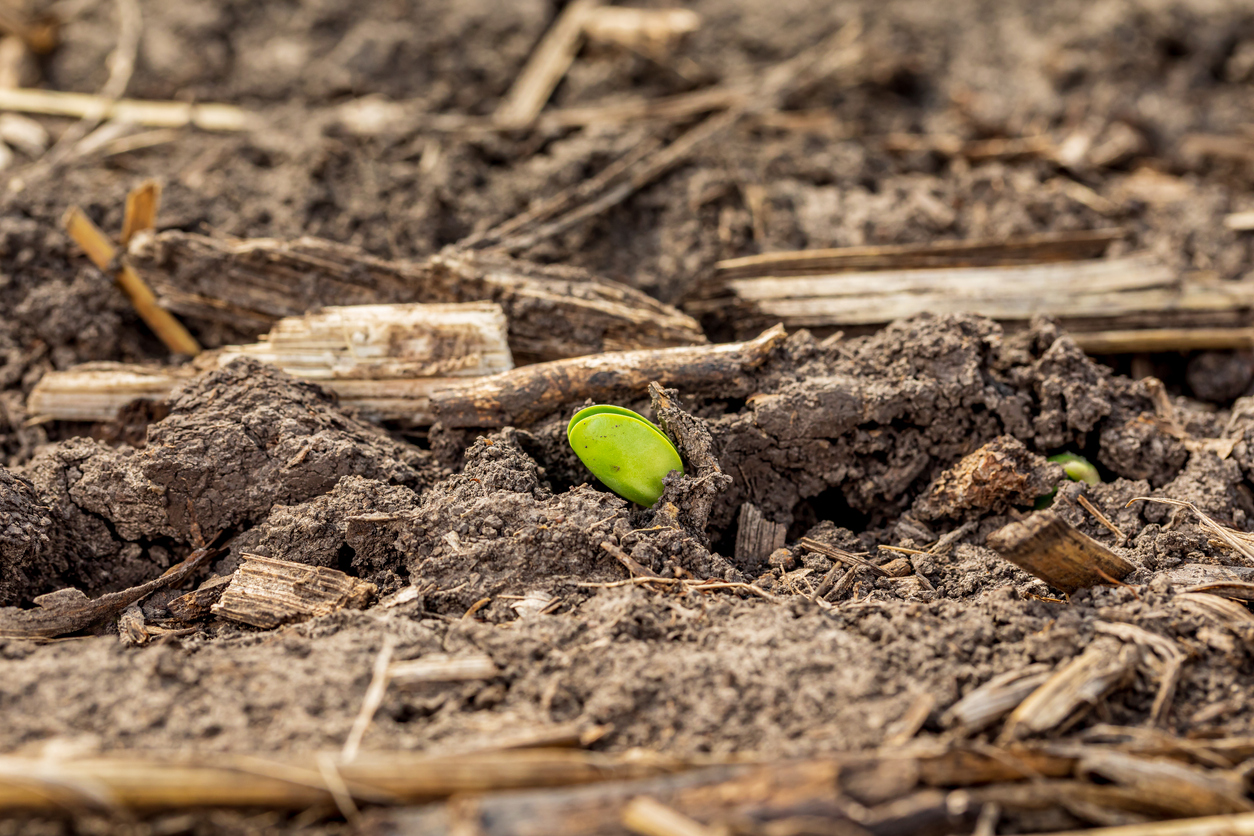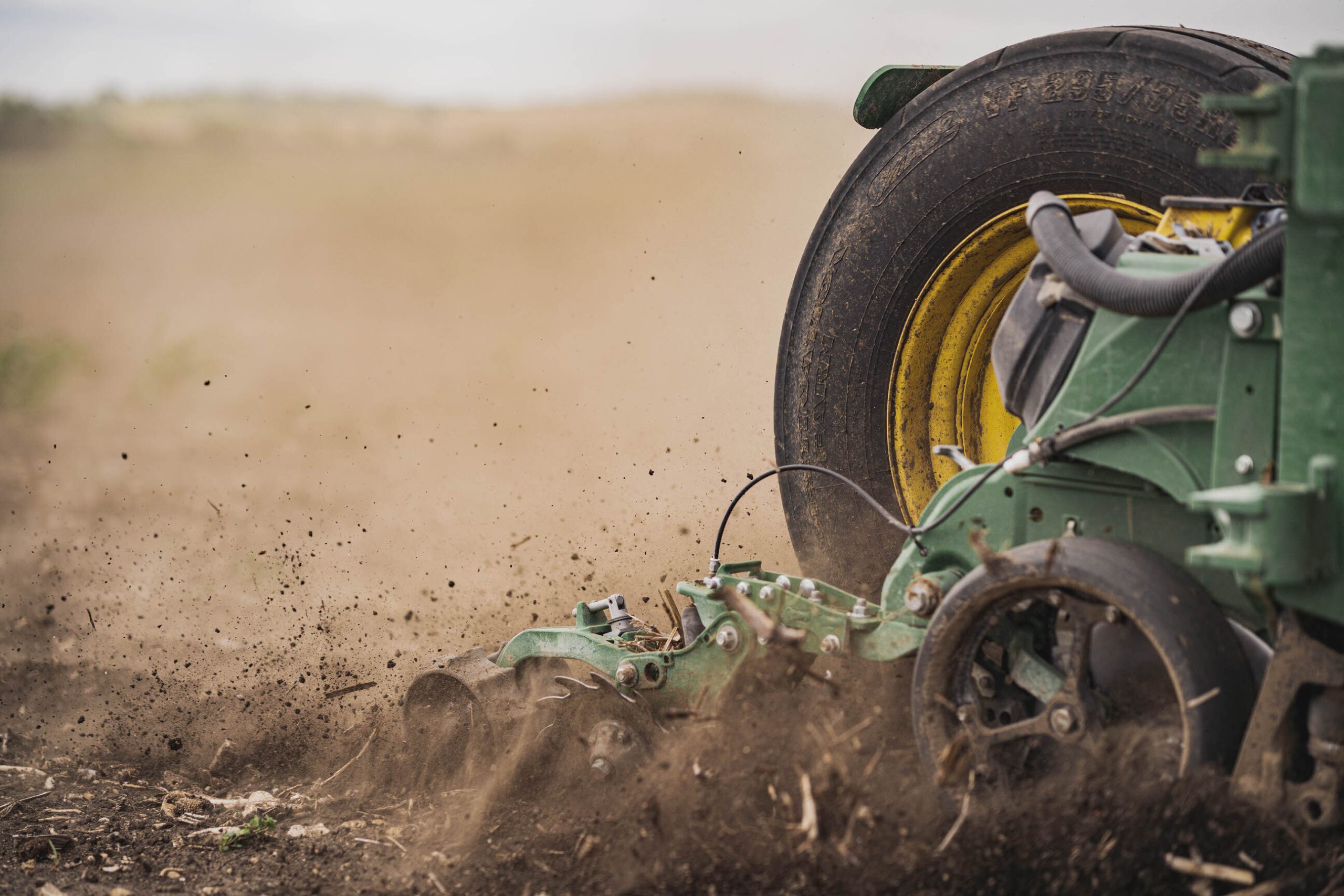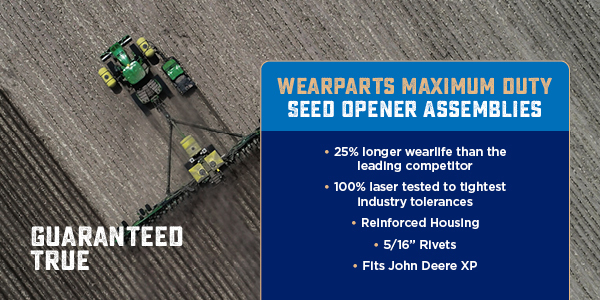As farming practices go, crop residue management is a relatively new concept. While many aspects of tillage farming have barely changed in centuries (save for advances in technology), it wasn’t until the 1960s that farmers began to make the connection between their operations and the erosion or degradation of the soil.
This eventually led to the adoption of no-till farming practices and other conservative tillage methods, including the idea of using crop residues to protect and nourish the soil.
A large percentage of farmers now practise some form of residue management on their land, and as a result, these methods – and the tools to support them – have become much more refined. Let’s take a look at the different types of residue management, and what’s available to help farmers manage these processes more efficiently.
What is residue management?
When we talk about residue management, we are usually referring to the deliberate management or use of leftover stalks, stems, leaves and other vegetation left behind when a crop such as corn, barley or wheat is harvested.
However, residue management can also refer to cover crops – crops that are planted for the sole purpose of protecting the soil.
In both cases, the vegetation plays an important role in protecting the soil from wind erosion, promoting moisture absorption and preventing surface water runoff, and enhancing the soil structure together with its roots.
At a certain point in the life cycle of these plants, they will then be plowed into the soil where they decompose, enriching the soil with organic matter and nutrients.
Sometimes, chopped residue such as straw is left lying on the soil surface. This process is called mulching. Mulch is often used as cover for emerging seedlings, protecting them from extreme weather until they become established. The mulch decays over time, providing organic matter for the soil.
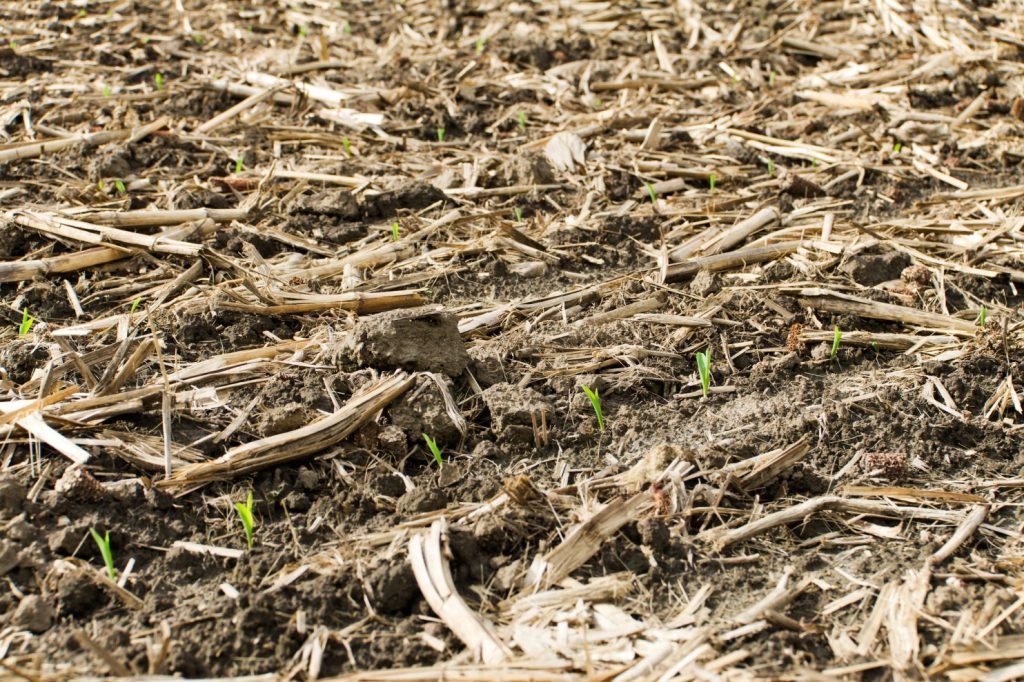
What are the main types of residue management?
Residue management is carried out as part of a wider tillage system. In a no-till system, more than 30% of the soil is covered by residue. In conservation tillage – such as strip-till or ridge-till, between 15% and 30% is covered. Conventional tillage systems leave less than 15% of the soil covered by residue at any given time.
No-till systems
No-till farming involves planting crops directly into undisturbed soil, with residues from the previous crop left behind to protect emerging seedlings and maintain the structure of the soil.
No-till systems depend on the use of very precise, sharp planting blades that can effectively open a clean furrow by slicing down through surface trash. If the blades are dull or not angled correctly, hairpinning can occur. This is when trash gets pushed down into the bottom of the furrow, allowing air to get trapped and preventing good seed-to-soil contact, which can lead to poor germination and disease.
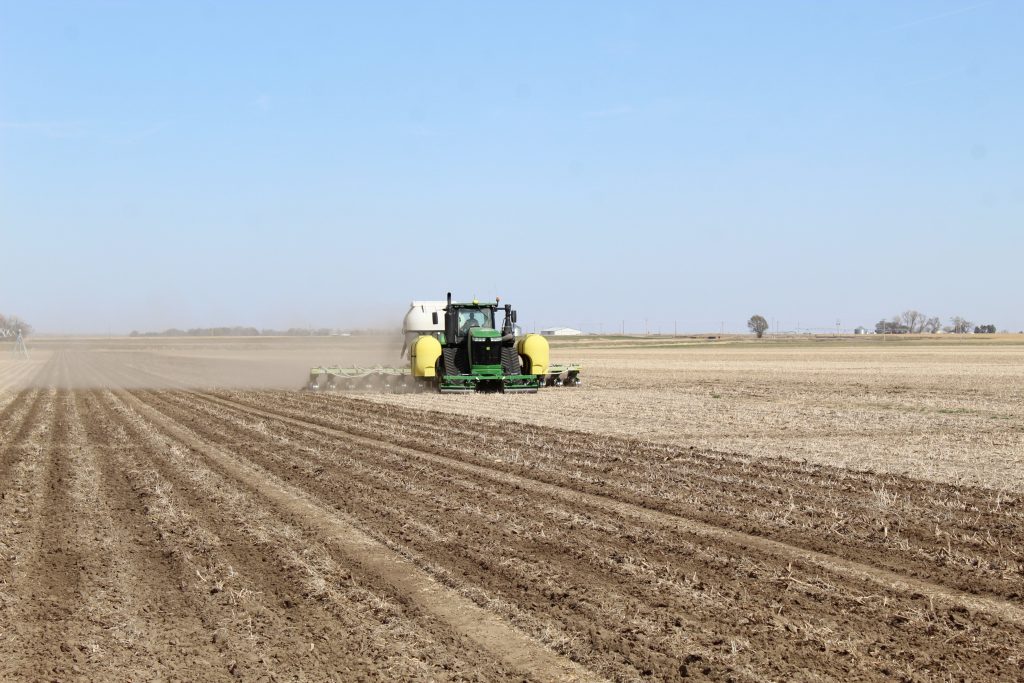
Conservation tillage
Also known as reduced tillage, conservation tillage is the collective term for a number of different practices that aim to retain more surface residue for the benefit of the soil. Farmers may use one of the following processes:
Strip-till
Strip till is where the land is tilled in alternating strips. Where crops are to be planted, the residue is plowed in. But between rows, the soil is left undisturbed with the residues intact. The following year, the strips are switched over so that each planting cycle, half the field is left undisturbed. Strip tillage is popular on challenging soils where no-till might not be practical. The process itself is usually carried out using a strip-till rig with a combination of ripper points, coulter wheels, fertilizer knives and other soil conditioning blades.
Ridge-till
Ridge tillage is often used for sloping sites, but can be implemented in almost any conditions. The land is initially tilled to create evenly-spaced ridges that sit 4-6 inches above the level of the soil, with furrows in between. The tops of the ridges are more aerated and warm more quickly than the furrows. Crops are planted into the ridge, which gives them an advantage over any weed seeds that germinate in the furrow.
Following harvest and over winter, residue from the crop is left on the surface. In spring, only the tops of the ridges are tilled and reshaped before planting. Ridge tillage has the disadvantage of needing specialist ridge-tillage machinery for cultivation and planting. Residue on the ridge top may be removed altogether using a ridge cleaner, or chopped using blades set to a very shallow depth – sharpness is vital so as not to damage the shape of the ridge.
Mulch-till
Mulch tillage is another technique for residue management. Instead of plowing residue into the soil, in mulch tillage the subsoil is tilled using deep implements like chisel plows to break up compaction, while the surface of the soil – and any vegetation or stubble on it – is left relatively undisturbed. Mulch till is regarded as a conservation technique because it leaves at least 30% of the soil surface covered by trash; however it involves tilling 100% of the subsoil, which can still leave the soil vulnerable to wind and water erosion.
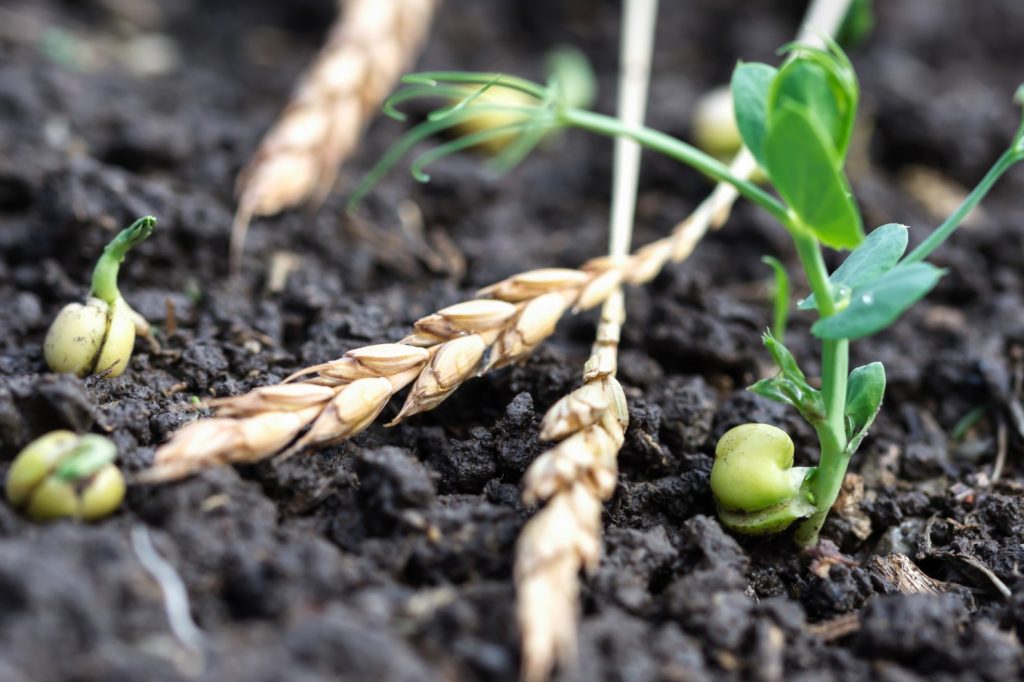
Cover cropping
Cover cropping is also sometimes referred to as ‘green manure’. Cover crops are planted with the sole purpose of covering the soil, rather than as a cash crop for harvesting. The most common cover crops are legumes, which are part of the pea family – these include alfalfa, peas, beans and lentils. Legumes are known for their high nitrogen levels, which they fix into the soil, reducing the need for chemical fertilizers. Legume crops also help to eliminate soil bacteria and enhance biodiversity, forming valuable ecosystems that help to further enhance soil quality in the long run.
Cover crops are usually plowed into the soil before the plants reach maturity, although sometimes they are used as fodder for grazing animals who eat the vegetation and then condition the soil with their waste.
What are the benefits of residue management?
The benefits of effective residue management have both environmental and financial benefits for the farmer.
Erosion prevention
As previously discussed, the primary benefit of crop residue management is its ability to protect the soil from wind and water erosion. The presence of stubble on the soil surface prevents dry soil from blowing or being washed away during extreme weather conditions, especially in winter.
Moisture retention
However, crop residue management also has important benefits for overall soil quality, too. Leaving residue behind after a crop is harvested means that the roots of the plant are still intact, which preserves the soil structure and prevents it from becoming compacted. This means that moisture can penetrate more easily, and can be stored in the pores of the soil which reduces surface waterlogging and runoff.
Nutrient cycling
As the residue decays, the nutrients stored within it are released back into the soil. Fibrous material decomposes into humus, which is a rich source of nourishment for subsequent crop plantings. Humus-rich soils retain heat more effectively, so they warm up faster in spring and stay warmer for longer during the growing season.
Weed suppression
While decaying crop residues can promote growth, stalky crop residues on the surface can help to inhibit the growth of weeds by preventing seeds from germinating.
Sustainability and efficiency
Crop residue management systems like no-till and strip-till also have environmental and financial benefits. The less the soil is disturbed, the more carbon it can sequester, which is one way farmers can help slow down climate change. Reduced tillage systems can often open a furrow, fertilize and plant in a single pass, which vastly reduces the cost per acre and maximizes farm productivity.

What planting and tillage tools are used for residue management?
Crop residue management requires the use of a range of different tillage tools and implements depending on the system being used.
- Seed opener blades are used in all systems for opening a seed furrow and planting the seed. In no-till systems, it’s vital that seed opener blades run true and stay sharp so they can effectively slice through trash and open a clean furrow with no hairpinning. Wearparts seed opener blades are triple heat treated with a longer bevel that stays sharp for up to 30% longer than the OEM equivalent, with a lifetime guarantee against breakage. We test all our blades in-house to some of the tightest tolerances in the industry, ensuring precision planting even in dry soil conditions.
- Coulter blades and high-speed compact disc blades may be used in strip-till operations to prepare a seedbed before planting. Again, sharpness and durability are of paramount importance, enabling the farmer to cover more ground before the blades need to be replaced. Our boron steel blades are designed to wear more evenly and last longer than any other blades on the market – plus we’re the exclusive United States distributor of Serbian-made, globally renowned FKL bearing hubs to help you get the best possible performance from your blades.
- Ripper points and chisel plow spikes are used in mulch-till operations for subsoiling. This is deep, heavy-duty work that demands superior components with the longest possible wear life. We offer custom hardfacing on many of our ground-engaging components, and we also source our ripper points using high-chromium white iron for additional strength and aggressiveness.
- For ridge tillage systems, our cultivator sweep blades can be used for mechanical weed control.
Want to find out more?
If you’re thinking ahead to fall planting or even next spring’s crop residue management, and you’d like to know more about how Wearparts can make your operations more efficient, get in touch – or locate your nearest Wearparts dealer.

